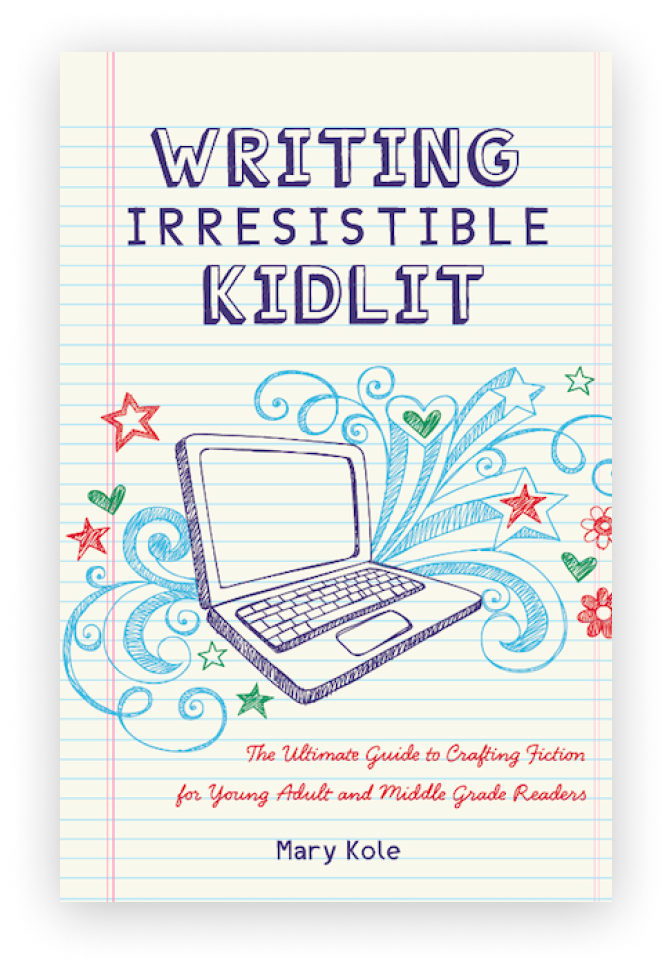Using the Action Tag in
Creative Writing
By Mary Kole
Mary Kole is a former literary agent, freelance editor, writing teacher, author of Writing Irresistible Kidlit, and IP developer for major publishers, with over a decade in the publishing industry.
If you're an aspiring writer looking to hone your writing craft, then you've likely heard the term "action tag" thrown around, especially when it comes to writing a scene. But what exactly is an action tag, and how do you use one effectively in your fiction writing? In this article, I’ll explore the ins and outs of action tags in creative writing, including their purpose, formatting, common mistakes, and best practices of using this writing tool. By the end of this article, you'll have a solid understanding of how to use the action tag properly to enhance your scenes and improve your overall storytelling.
What Is an Action Tag?
First of all, let's define what I mean by "action tag." An action tag is a descriptive phrase that follows or precedes a line of dialogue, indicating who is speaking and how they are delivering their words. This is very different from a speech tag, however. For example, "She shook her head," or "He leaned in close to whisper." Action tags serve several important purposes in fiction writing, including conveying emotion, setting the scene, and providing context for the dialogue as different characters go through their action beats. Without action tags, dialogue might start to feel flat and lifeless, lacking the nuance and depth that makes a story compelling. Or, worse, it can start to feel like two talking heads if you don’t occasionally balance speech tags or thought tags with an action tag.
But when should you use an action tag in a scene? The short answer is: whenever it adds value without being distracting. In general, you'll want to use action tags sparingly, focusing instead on strong dialogue that conveys the emotion and subtext of the scene. However, there are times when an action tag can enhance the dialogue, such as when it provides insight into character motivation, emotion, or physical state. This is especially true of a character who we do not have point of view access to, and whose interiority is unknown to readers. For example, if a character is nervous or agitated, you might use an action tag to show them fidgeting or pacing while they speak.
When using an action in dialogue, it's important to balance them with speech tags (e.g. "he said," "she asked," etc.). Speech tags indicate the speaker and serve a similar purpose as action tags, but are less descriptive and typically used more frequently. It's generally recommended to limit your use of speech tags to the bare minimum needed to clarify who is speaking. Too many speech tags can clutter the page and distract from the dialogue itself.
Action Tag Best Practices
One common mistake writers make when using an action tag is using them too frequently or too repetitively. If every line of dialogue is followed by an action tag, it can quickly become tedious and distracting. Instead, choose the moments where an action tag adds the most value and focus on making those descriptions vivid and impactful. Similarly, avoid using the same action tag over and over again (e.g. "he shrugged" or "she smiled"). And to be clear, nodding and smiling are action tags, not speech tags, as these actions do not produce speech, but often accompany it. Varying your descriptions will keep the reader engaged and enhance how your characters appear in scene.
To get the most emotional impact out of your scenes and dialogue, it's important to follow some best practices. Consider the setting and physical context of the scene, and use action tags to create a vivid picture in the reader's mind. Show, don’t tell the characters' emotions through their body language, as well as their words. And remember that less is often more—by using your action tags sparingly and intentionally, you'll create a more impactful and powerful story.
Mastering the art of the action tag is a key step towards creating compelling and immersive stories. By understanding the purpose and formatting of action tags, knowing when and how to use them, avoiding common mistakes, and following best practices, you can take your writing to the next level. So go forth, experiment with action tags, and see what kind of emotional impact you can create in your scenes and dialogue.

Click here to purchase Writing Irresistible Kidlit, my book on fiction craft for MG and YA novels, out from Writer's Digest Books. This will show you my writing craft philosophy and give you lots of valuable advice, including tips for the novel revision process and self-editing. There are over 35 example novels cited and discussed throughout. It’s a valuable resource for any writer’s toolkit.
Click here to purchase Irresistible Query Letters, my book on query letters, including over forty examples with comprehensive notes on each one. There’s a ton of submission advice, best practices, and insider information in these pages, and you’ll really enjoy seeing what other writers are doing in the slush.




